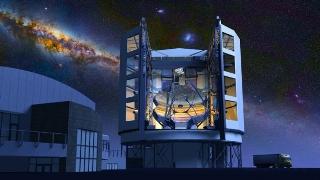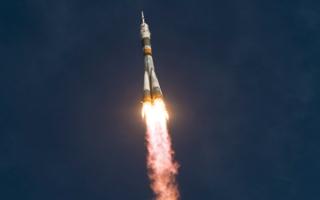
The Giant Magellan Telescope, against the southern Milky Way, as it will appear when it's completed. Photo: Todd Mason/Mason Productions and GMTO Inc.
WASHINGTON (PTI): Scientists have developed the most challenging astronomical mirror - ten times more powerful than any other ever made - for a giant telescope to explore the outer space and early universe.
Researchers at the Steward Observatory Mirror Laboratory, University of Arizona and in California, working underneath a football stadium have been polishing an 8.4-meter diameter mirror with an unusual, highly asymmetric shape.
By the standards used by optical scientists, the "degree of difficulty" for this mirror is 10 times that of any previous large telescope mirror.
The mirror surface matches the desired prescription to a precision of 19 nanometers, so smooth that if it were the size of the continental US, the highest mountains would be little more than a half-inch high.
This mirror, and six more like it, will form the heart of the 25-meter Giant Magellan Telescope, providing more than 380 square meters, or 4,000 square feet, of light-collecting area.
The Giant Magellan Telescope will lead a next generation of giant telescopes that will explore planets around other stars and the formation of stars, galaxies and black holes in the early universe.
The Telescope will be located on a remote mountaintop in the Chilean Andes where the skies are clear and dark, far from any sources of light pollution.
It is slated to begin operations late in the decade, will allow astronomers and students across the US and from around the world to address critical questions in cosmology, astrophysics and planetary science.
The mirror was cast from 20 tons of glass, melted in a rotating furnace until it flowed into a honeycomb mold.
The mirror has an unconventional shape because it is part of what ultimately will be a single 25-meter optical surface composed of seven circular segments, each 8.4 meters in diameter.
"We need to be certain the off-axis shape of this mirror, as well as the other six that will be made for GMT, is precisely right, to an accuracy of 1/20 of a wavelength of light," said Buddy Martin, polishing scientist at the Lab.
"Only then will the seven large mirrors form a single, exquisitely sharp image when they all come together in the telescope in Chile. We have now demonstrated that we can fabricate the mirrors to the required accuracy for the telescope to work as designed," Martin said in a statement.
The second of seven mirrors for the GMT was cast at the mirror lab in January of this year, the third will be cast in August 2013.
 Previous Article
Previous Article Next Article
Next Article












The Indian Air Force, in its flight trials evaluation report submitted before the Defence Ministry l..
view articleAn insight into the Medium Multi-Role Combat Aircraft competition...
view articleSky enthusiasts can now spot the International Space Station (ISS) commanded by Indian-American astr..
view article